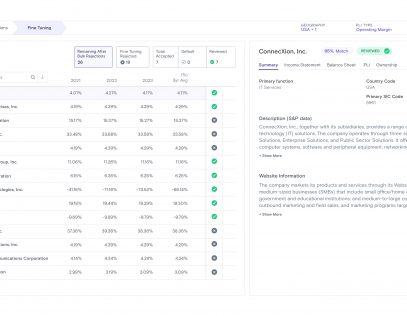OECD’s Two-Pillar solution appears to have more and more turning points as it is subject to global discussions on how the new tax rules should work to be efficient and fair. While some rules are gaining acceptance, others may become real deal-breakers.
Many countries have had a hard time agreeing to Pillar One, which expands a country’s authority to tax profits made by companies that generate sales in their country but don’t have a physical presence there. It applies to about 100 of the biggest and most profitable MNEs, and the aim of the proposal is to distribute part of their profits to countries where they sell products or provide services.
One of the key components of Pillar One is Amount A, a taxable portion of the residual profit earned by large and highly profitable enterprises which would benefit “market jurisdictions,” those in which goods or services are supplied or consumers are located.
The relationship between Amount A and withholding taxes has raised concerns for the Intergovernmental Group of Twenty-Four on International Monetary Affairs and Development (G-24), which coordinates the position of developing countries on monetary and development issues in the deliberations and decisions of the Bretton Woods Institutions (BWI). The members include Argentina, Brazil, China, Mexico, Colombia, India, Philippines.
The G-24 found the reference to the consideration of withholding taxes (WHT) in Amount A “highly concerning.” Furthermore, the group stated, “any consideration of withholding taxes in Amount A will lead to erosion of existing taxing rights and will make Pillar One unattractive and meaningless for the developing countries.”
A very close relative of corporate income tax (CIT), withholding taxes relate to specified payments made to a non-resident recipient. The withholding tax payments relate mainly to interest, dividends, royalties, and services. WHT rates differ between countries as they are set both in local regulations and double-tax treaties. If the payment is made to a related party, then also the arm’s length rule may influence the withholding tax. Double-tax treaties enable the application of lower withholding tax rates. However, the lowered withholding tax rate resulting from a double-tax treaty may be applied only to the arm’s length part of the payment and any part above arm’s length does not benefit from lowered tax rate. The amount exceeding the arm’s length amount is taxed according to domestic withholding tax rate (that may be significantly higher when comparing to double-tax treaty tax rate). For sure, neither developing nor any other country want to reduce or bear any risk of reduction of its withholding taxes revenues. This is why developing countries would like to have both Amount A allocation under Pillar One and at the same time, benefit from withholding tax regime as it works now.
The BEPS Inclusive Framework aims to finalize a new Multilateral Convention for implementation of Pillar One by mid-2023, for entry into force in 2024. But bear in mind issues raised both by MNEs and state representatives may postpone this timeline.
Taxes, in general, are very complex and there is clear interference not only between different taxes but also between the same lines of taxes. Just look at the relationship between tax-deductible costs in CIT and transfer pricing together with withholding tax. In such a relationship you may find there very interesting stories e.g. on loan interest or management fees. Taxes build one but very diverse family and this diversity has to be taken into account when we play with taxes.
You may also be interested in:
. White paper: How International Organizations Are Changing Transfer Pricing Compliance
. White paper: Transfer Pricing and Tangible Goods









